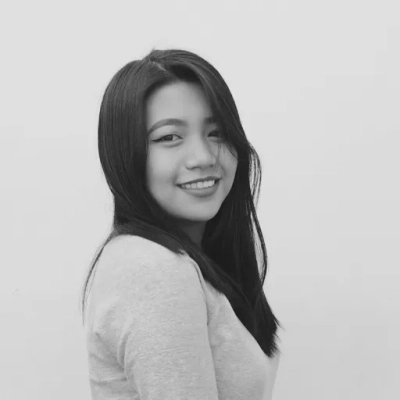9 Ways to Stay Creatively Inspired When Working On Repetitive Design Projects
Repetitive design projects can often lead to creative burnout, but there are effective strategies to stay inspired. This article explores various methods to maintain creative momentum, from changing your environment to implementing user feedback loops. Drawing on insights from industry experts, these techniques offer practical ways to infuse fresh energy into your design process and tackle repetitive tasks with renewed enthusiasm.
- Change Your Environment for Fresh Inspiration
- Cross-Industry Research Sparks Design Innovation
- Explore New Techniques Through Creative Challenges
- Frame Each Project as a Unique Story
- Curate a Visual Inspiration Journal
- Take Mindful Walks to Reset Creativity
- Introduce Variation Through Exploratory Research
- Implement User-Failure-to-Design Feedback Loop
- Experiment with New Tools to Transform Approach
Change Your Environment for Fresh Inspiration
When faced with repetitive design projects, I find that deliberately changing my work environment can significantly reignite creative thinking. Sometimes I'll work from a different location in the office, a café, or even outdoors, as new surroundings tend to trigger fresh neural connections and perspectives. I also make it a regular practice to schedule what I call "brain breaks" - short periods away from the project to completely disconnect and allow my subconscious to process information differently. This combination of environment changes and strategic breaks consistently helps me approach familiar design challenges with renewed creativity.

Cross-Industry Research Sparks Design Innovation
When working on repetitive design projects, I've discovered a secret to having fresh creative ideas. I first start by doing some research and studying what's popular in other industries - not just my industry (web design). I'll study and look over trends in tech startups, luxury brands, or even print designs - I don't discriminate on the industry type. This will keep my creative juices flowing and create new ideas that I can build around for small business websites. To make this trick even stronger, I start each new project with a quick "inspiration sprint," where I spend 10-15 minutes browsing through award-winning designs or breaking down rivals before cracking open Photoshop or drawing a line of code. This little trick keeps my work fresh and makes sure each design project has its own unique personality and strategy behind it.

Explore New Techniques Through Creative Challenges
To stay creatively inspired when working on repetitive design projects, I make a conscious effort to mix up my approach and experiment with new techniques or tools. One specific practice that helps me maintain fresh perspectives is setting aside time for creative challenges that are outside of the current project scope. For example, I might take part in a daily sketching exercise or explore new design trends and styles that I wouldn't typically use for the project at hand.
This practice gives me the freedom to explore new ideas and stretch my creativity without the pressure of meeting a specific brief. It's often these side projects or challenges that spark new ideas and approaches that I can bring back to my repetitive tasks. Additionally, I find it helpful to take short breaks and come back to the work with fresh eyes—sometimes stepping away for a bit can lead to sudden bursts of inspiration when I return. This keeps the work from feeling monotonous and allows me to bring energy and creativity to every design, even if it's part of a larger series of similar projects.

Frame Each Project as a Unique Story
I maintain creative energy by approaching each project as a story rather than just a task. Even if the work is repetitive, each design tells a different narrative, whether it's about space, function, or experience.
One practice that helps is spending time understanding the story behind each client's needs. By framing the project through their perspective, I can explore unique ways to communicate that story visually.
I also gather inspiration from storytelling outside of design, such as photography, film, and literature. Translating ideas from one medium to another encourages inventive thinking.
Finally, I challenge myself to create constraints that force innovation. Limiting palette choices or design elements turns repetition into problem-solving, which keeps the creative process stimulating.

Curate a Visual Inspiration Journal
I stay creative on repetitive design projects by intentionally exposing myself to new ideas outside of my normal workflow. One of the ways I do this is by keeping a "visual inspiration journal" where I collect interesting layouts, color palettes, and typography from unrelated industries - like architecture, fashion, or even packaging design. Before I start a new project, I review the journal to get new ideas and challenge myself to include at least one unexpected element. I also schedule regular brainstorming sessions with colleagues where we review each other's work and explore alternative solutions. This combination of external inspiration and peer feedback helps me stay energized and original even on the most repetitive projects. Over time, it's become a reliable way to avoid creative burnout and deliver designs that feel fresh and exciting.

Take Mindful Walks to Reset Creativity
Mindful walks are my creative reset. When I'm knee-deep in repetitive design work, I've found that stepping away completely and heading out for a walk works wonders. The key is to try not to distract yourself and actually be present; which means no calls, messages, podcasts, or even music. Let your mind wander and try to immerse yourself in your environment, rather than staying in your comfortable headphone bubble.
I'll take a proper walk around my neighborhood, and without fail, I'll come back with a fresh angle or solution to whatever was making me feel creatively flat. A little bit of boredom and nothingness is brilliant for your creative brain.
But here's the flip side: when I'm actually working on those monotonous, repetitive tasks (the stuff that doesn't need creative juice but still needs doing), that's when I lean into podcasts or audiobooks. It keeps one part of my brain engaged while my hands do the familiar work.

Introduce Variation Through Exploratory Research
Staying creatively inspired on repetitive design projects requires deliberately introducing variation and external stimuli into the workflow. At MacPherson's, one practice that has proven highly effective is setting aside time each week for exploratory research unrelated to the current project. This includes reviewing emerging trends in adjacent industries, observing patterns in nature or architecture, and engaging with diverse visual media. Incorporating these insights into mood boards or sketch sessions allows the creative team to reinterpret familiar elements in new ways. Additionally, brief collaborative brainstorming sessions with colleagues from non-design disciplines often uncover unexpected angles or solutions. By intentionally creating space for curiosity and experimentation, repetitive tasks become opportunities for innovation, and design work retains freshness and originality without compromising deadlines or project consistency.

Implement User-Failure-to-Design Feedback Loop
For a long time, repetitive design felt like a simple product catalog. We focused on meeting specifications, but it did nothing to build a dynamic brand. We were talking at the customer, not with them.
I stay creatively inspired by focusing on the operational impact of the design. The role a strategic mindset has played in our creativity is simple: it has given us a platform to show, not just tell. Our core brand identity is based on the idea that we are a partner to our customers.
One specific practice that helps maintain fresh perspectives is implementing a "User-Failure-to-Design Feedback Loop." I spend time in the operations logs, analyzing where a customer failed to understand the installation instructions for a heavy-duty OEM Cummins part. The creative goal then shifts from making the design look good (Marketing) to making the design functionally impossible to misunderstand (Operations).
This has been incredibly effective. Our designs are now defined by the quality of their usability and the success of the customer, which is a much more authentic way to build a brand. The design process is no longer a broadcast channel for aesthetics; it's a community of experts focused on utility.
My advice is that you have to stop thinking of design as a way to promote your product and start thinking of it as a platform to celebrate your customers' operational success. Your brand is not what you say it is; it's what your customers say it is.

Experiment with New Tools to Transform Approach
I find that regularly experimenting with new tools keeps me creatively inspired, especially when working on repetitive design projects. Recently, I started using V0 for creating UI mockups instead of my usual process with screenshots and Canva, which has completely transformed how I approach design challenges. This change not only brought fresh perspectives to my work but also sparked new ideas I wouldn't have discovered with my previous methods.
Working closely with our development team, we established a workflow that reduced our mockup-to-deployment time to under 30 minutes, which has been incredibly motivating. When technology removes tedious parts of the process, I find my creative energy can focus on solving the interesting problems rather than getting bogged down in repetitive tasks.
For me, regularly switching up tools and methods is the specific practice that consistently helps maintain creativity even on routine projects.


